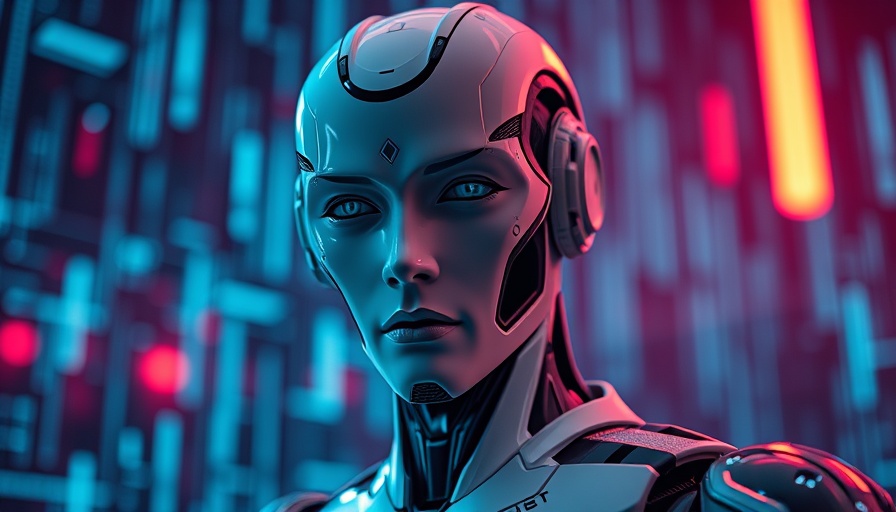
Revolutionizing Surgery: What You Need to Know About Robotic Surgeons
The future of surgery is upon us, and it’s wearing a metallic, highly logical exterior. With advancements in robotic technology, surgical procedures are evolving, promising enhanced precision and reduced recovery times. The rising integration of AI into surgical practices has sparked discussions about the possibilities, questions, and concerns surrounding this transformative trend.
In 'Your Next Surgeon Might Be A Robot', the discussion dives into the transformative role of robotics in surgery, exploring key insights that sparked deeper analysis on our end.
Understanding Robotic Surgery
Robotic surgery, fundamentally, involves the use of robotic systems to assist surgeons in performing a variety of operations. One of the significant advantages is the precision these machines promise. Intuitive Surgical's da Vinci Surgical System is a well-known example, enabling minimally invasive procedures with unmatched accuracy. Surgeons can operate through small incisions with the aid of robotic arms guided by advanced software that enhances their capabilities.
Harnessing AI for Enhanced Precision
AI technology is increasingly intertwining with robotic surgery, providing systems that can analyze large quantities of data quickly. This ability to digest and interpret vast datasets can lead to improved decision-making during surgical procedures. For instance, AI algorithms can provide real-time feedback to surgeons, ensuring they have the most relevant data as they operate.
AI also plays a vital role in preoperative planning. Algorithms can analyze patient data to suggest optimal surgical approaches, tailoring strategies to individual needs. This level of personalization fosters enhanced outcomes, increasing the likelihood of successful surgeries and swift recoveries.The Advantages of Robotic Surgery
Choosing robotic surgery comes with numerous benefits. Firstly, the enhanced precision leads to smaller incisions, which translates to decreased postoperative pain and quicker recovery times. Patients who undergo robotic-assisted procedures often find themselves back on their feet much faster compared to traditional surgery methods.
Moreover, robotic systems can reduce the risk of complications that sometimes arise from human error. These machines are programmed for surgical precision, and while they operate under surgeon supervision, their mechanical nature allows for steady and consistent performance throughout the procedure.
Concerns Surrounding Robotic Surgeons
While the advancements in robotic surgery are promising, they raise an array of questions. One major concern is the idea of doctor-patient rapport. Can a robot truly understand the nuances of human emotions and the intricacies of patient care? Patients often seek comfort in their surgeon's reassurances, and this emotional connection could be challenging to replicate through a machine.
Additionally, there’s the issue of dependency on technology. As surgical robots become more sophisticated, there's a risk that surgeons might rely too heavily on their mechanical counterparts, potentially diminishing their own skills. As was aptly warned by tech visionary Elon Musk, excessive reliance on AI technology might breed negligence in honing interpersonal and professional skills.
Looking Towards the Future: Trends and Predictions
As robotic surgery advances, we can expect further integration of AI analytics and machine learning. Hospitals may soon employ robotic systems that can not only assist but also learn from each procedure they conduct, becoming more adaptive and intelligent over time. This evolution hints at a future where surgical robots are personalized entities, equipped to handle complex decision-making processes in real-time during operations.
Experts predict that within the next decade, robotic procedures will become standard in many operating rooms. The push for enhanced patient outcomes and cost efficiencies will likely drive hospitals to adopt these technologies aggressively.
Conclusion: Embracing Innovation in Medicine
Embracing robotic surgery represents not only a leap forward in medical technology but also a challenge for patients and healthcare professionals to evolve their perspectives on treatment and care. As these machines take on more responsibilities in our healthcare systems, understanding their capabilities, limitations, and implications becomes essential.
The blend of AI technology with healthcare suggests a future where patient outcomes are markedly improved through precision and adaptability. However, alongside this progress, it's crucial to consider the importance of human touch and empathy in medical treatment.
As we navigate this technological landscape, keeping informed about such innovations will enable patients and healthcare professionals alike to make educated decisions about the future of healthcare. Let’s explore how these advancements might become part of our daily lives and health choices, setting a foundation for a seamless integration of technology and medicine.
 Add Row
Add Row  Add
Add 




Write A Comment